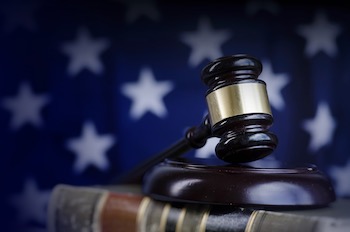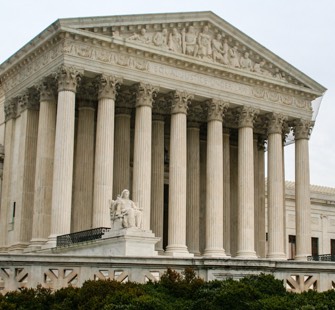Why courts rely on §101 when other sections of the statute seem far better suited
 Diamond v. Diehr specifically warned about §102 improperly influencing the §101 analysis, so a §101 analysis was presumably considered separate from a §102, §103 or §112 analysis. Fast forward a little more than a generation. In 2012, Mayo Collaborative Services v. Prometheus Laboratories, Inc. was decided by the Supreme Court, which appeared to disregard the warning of Diamond v. Diehr.
Diamond v. Diehr specifically warned about §102 improperly influencing the §101 analysis, so a §101 analysis was presumably considered separate from a §102, §103 or §112 analysis. Fast forward a little more than a generation. In 2012, Mayo Collaborative Services v. Prometheus Laboratories, Inc. was decided by the Supreme Court, which appeared to disregard the warning of Diamond v. Diehr.
Mayo v. Prometheus addressed the question of whether two patents concerning the use of thiopurine drugs to treat autoimmune diseases satisfied the §101 requirement. The Supreme Court ended up holding that the patents were invalid under §101. But its reasoning confused many patent practitioners and litigators. Justice Breyer, writing for a unanimous Court, stated that, because the steps of “administering” and “determining” were well known and conventional, they were not patent-eligible subject matter. This analysis seems to combine the requirement of patent eligibility with that of novelty and nonobviousness. In other words, in Mayo, the Supreme Court did a corollary of what it specifically warned against doing in Diehr.
Supreme Court says district courts have discretion to enhance patent damages
 In a unanimous decision delivered by Chief Justice John Roberts (left) in Halo Electronics, Inc. v. Pulse Electronics, Inc., the United States Supreme Court recently did what much of the patent world expected it would do; they overruled the Federal Circuit’s “unduly rigid” test for the awarding of enhanced damages for willful damages put in place by In re Seagate Technology, LLC, 497 F. 3d 1360, 1371 (2007)(en banc).
In a unanimous decision delivered by Chief Justice John Roberts (left) in Halo Electronics, Inc. v. Pulse Electronics, Inc., the United States Supreme Court recently did what much of the patent world expected it would do; they overruled the Federal Circuit’s “unduly rigid” test for the awarding of enhanced damages for willful damages put in place by In re Seagate Technology, LLC, 497 F. 3d 1360, 1371 (2007)(en banc).
Under Seagate, in order for a patent owner to be entitled to receive enhanced damages of up to triple the original damages award, the patent owner first had to “show by clear and convincing evidence that the infringer acted despite an objectively high likelihood that its actions constituted infringement of a valid patent.” Then, the patentee was required to demonstrate, again by clear and convincing evidence, that the risk of infringement “was either known or so obvious that it should have been known to the accused infringer.” The Supreme Court held that this test was not consistent with the express language of 35 U.S.C. §284.
In the Supreme Court’s recent decisions in Highmark Inc. v. Allcare Health Management Systems, Inc., 134 S. Ct. 1744 (2014) and Octane Fitness, LLC v. ICON Health & Fitness, Inc., 134 S. Ct. 1749 (2014) the Court, interpreting 35 U.S.C. § 285, found that there was no textual support in the statute to impose an onerous, rigid test for the awarding of attorneys’ fees to a prevailing party in a patent infringement lawsuit. Most notably, the Supreme Court explained to the Federal Circuit that they misinterpreted a key ruling of the Supreme Court when they created their test, which would result in attorneys’ fees almost never being awarded.
That same exact misinterpretation was at the heart of Federal Circuit case law relating to an award of enhanced damages to a victorious patent owner, which was why so many believed that the Supreme Court would grant district courts the same discretion with respect to enhanced damages that they were given with respect to attorneys’ fees in 2014 in Highmark and Octane Fitness.
06.27.16 | Patent Damages, Patent Litigation, Supreme Court Cases | Gene Quinn
Eli Lilly, Pfizer among those supporting Sequenom cert petition
 Recently, a group of amici led by Eli Lilly filed an amici curiae brief with the United States Supreme Court in the matter of Sequenom, Inc. v. Ariosa Diagnostics, Inc. The Eli Lilly brief was filed in support of the petitioner, Sequenom. Eli Lilly is joined in this brief by Eisai Inc., Upsher-Smith Laboratories, Inc., Pfizer Inc., and Etiometry, Inc.
Recently, a group of amici led by Eli Lilly filed an amici curiae brief with the United States Supreme Court in the matter of Sequenom, Inc. v. Ariosa Diagnostics, Inc. The Eli Lilly brief was filed in support of the petitioner, Sequenom. Eli Lilly is joined in this brief by Eisai Inc., Upsher-Smith Laboratories, Inc., Pfizer Inc., and Etiometry, Inc.
On March, 21, 2016, Sequenom filed a Petition for Writ of Certiorari in the Supreme Court, challenging the decision of the United States Court of Appeals for the Federal Circuit in Ariosa Diagnostics, Inc. v. Sequenom, Inc. If the Supreme Court takes this case, they will be asked to reconsider the unfortunate breadth of their prior ruling in Mayo Collaborative Servs. v. Prometheus Labs. See SCOTUS Blog Founder asks Supreme Court to Reconsider Mayo.
04.19.16 | Biotech, patent eligibility, Patent Issues, Pharma, posts, Supreme Court Cases | Gene Quinn
SCOTUS takes Samsung appeal in Apple design patent infringement case
 On Monday, March 21, 2016, the United States Supreme Court agreed to hear the matter of Samsung Electronics v. Apple, Inc., a dispute between two giant technology companies that at its core relates to how much Samsung owes Apple for infringing certain design patents.
On Monday, March 21, 2016, the United States Supreme Court agreed to hear the matter of Samsung Electronics v. Apple, Inc., a dispute between two giant technology companies that at its core relates to how much Samsung owes Apple for infringing certain design patents.
So far, these two technology giants have shown little interest in playing nice. A jury found that Samsung infringed Apple design patents, Apple utility patents and also diluted Apple’s trade dresses. The infringed design patents are U.S. Design Patent Nos. D618,677 (“D’677 patent”), D593,087 (“D’087 patent”), and D604,305 (“D’305 patent”), which claim certain design elements embodied in Apple’s iPhone. The infringed utility patents are U.S. Patent Nos. 7,469,381 (“’381 patent”), 7,844,915 (“’915 patent”), and 7,864,163 (“’163 patent”), which claim certain features in the iPhone’s user interface. The diluted trade dresses are Trademark Registration No. 3,470,983 (“’983 trade dress”) and an unregistered trade dress defined in terms of certain elements in the configuration of the iPhone.
Supreme Court will decide whether BRI or Phillips standard applies to IPR claims
 During patent examination, pending patent claims are given the broadest reasonable interpretation (“BRI”) that is consistent with the specification, as would be understood by one of ordinary skill in the art. See Phillips v. AWH Corp., 415 F.3d 1303, 1316 (Fed. Cir. 2005).
During patent examination, pending patent claims are given the broadest reasonable interpretation (“BRI”) that is consistent with the specification, as would be understood by one of ordinary skill in the art. See Phillips v. AWH Corp., 415 F.3d 1303, 1316 (Fed. Cir. 2005).
The Patent Office applies the broadest reasonable interpretation in virtually all circumstances. It is, however, true that at least one situation where the Patent Office does not use broadest reasonable interpretation is when a reexamination of a patent is undertaken and reexamination will not be concluded until after the patent term has expired. The position of the USPTO is that, in this situation, a patent could not be changed because the term has expired; therefore, the only remaining “life” a patent has would be in litigation because the statute of limitations for a patent infringement action is six years. Thus, the USPTO applies the Phillips standard. (Further discussion of this advanced topic goes beyond the scope of this article, which is intended to be a primer on the broadest reasonable interpretation standard.)


No Comments
06.29.16 | patent eligibility, Patent Issues, section 101, Supreme Court Cases | Gene Quinn